Geysers are one of nature’s most awe-inspiring phenomena, captivating people for centuries with their explosive displays of hot water and steam. These geological wonders are found in various locations around the world, typically in areas with high geothermal activity. Geysers form when groundwater seeps deep into the Earth’s crust, where it is heated by magma or hot rocks. As the water temperature rises, pressure builds until the water is forced back up through a narrow opening, creating a spectacular eruption at the surface.
The size and power of geysers can vary greatly, with some reaching incredible heights and volumes. In this article, we will explore the top 12 largest geysers in the world, delving into their unique characteristics, locations, and the science behind their impressive displays. From the iconic Old Faithful in Yellowstone National Park to the lesser-known giants of New Zealand and Chile, join us on a journey to discover the raw power and beauty of these natural wonders.
Steamboat Geyser, Yellowstone National Park, USA

Steamboat Geyser, located in the Norris Geyser Basin of Yellowstone National Park, is the world’s tallest active geyser. When it erupts, Steamboat can shoot water and steam up to 380 feet (116 meters) into the air, making it a truly awe-inspiring sight. The geyser’s eruptions are unpredictable, with intervals between eruptions ranging from a few days to several decades.
Steamboat Geyser’s power comes from its unique underground structure. The geyser has a complex system of interconnected chambers and fissures that allow water to be superheated by magma deep beneath the surface. When the pressure becomes too great, the geyser erupts, releasing a tremendous amount of energy and sending a towering column of water and steam skyward.
In addition to its height, Steamboat Geyser is also known for the duration of its eruptions. A single eruption can last from a few minutes to over an hour, with the geyser continuously shooting water and steam into the air. The sight and sound of Steamboat Geyser in action is an unforgettable experience that draws visitors from around the world to Yellowstone National Park.
Waimangu Geyser, New Zealand
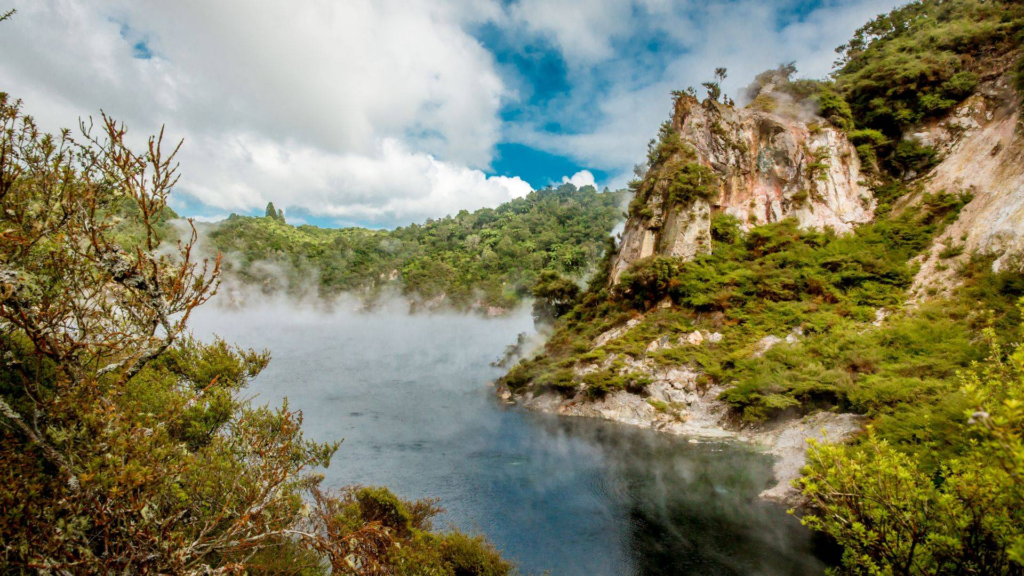
Waimangu Geyser, located in the Taupo Volcanic Zone of New Zealand’s North Island, was once the world’s largest geyser. From 1900 to 1904, Waimangu erupted regularly, shooting water and steam up to 1,500 feet (460 meters) into the air. The geyser’s eruptions were so powerful that they could be heard from miles away and even caused local earthquakes.
The birth of Waimangu Geyser is tied to the 1886 eruption of Mount Tarawera, which created a series of craters and fissures in the surrounding landscape. One of these craters filled with water, forming a hot spring that eventually gave rise to Waimangu Geyser. The geyser’s incredible size and power were attributed to the unique geological conditions created by the Tarawera eruption.
Unfortunately, a massive landslide in 1904 altered the underground structure of Waimangu Geyser, causing it to become dormant. Today, visitors to the Waimangu Volcanic Valley can still see the impressive crater that once held the world’s largest geyser and learn about its fascinating history through guided tours and educational exhibits.
El Tatio Geyser Field, Chile

The El Tatio Geyser Field, located in the Atacama Desert of northern Chile, is the third-largest geyser field in the world and the largest in the Southern Hemisphere. This geothermal wonderland sits at an elevation of 14,000 feet (4,320 meters) and covers an area of about 12 square miles (30 square kilometers).
El Tatio is home to over 80 active geysers, making it a truly spectacular sight. The geysers here are unique in that they are non-eruptive, meaning that instead of shooting water high into the air, they create bubbling pools and steam fountains. The steam from these geysers often condenses in the cold morning air, creating a surreal, misty landscape that is a favorite among photographers.
The El Tatio Geyser Field is also famous for its stunning thermal pools, which range in color from deep blue to vibrant red and orange due to the presence of mineral deposits. Visitors can take guided tours of the geyser field, learning about the geology and ecology of this unique environment while marveling at the raw power of the Earth’s geothermal energy.
Strokkur Geyser, Iceland
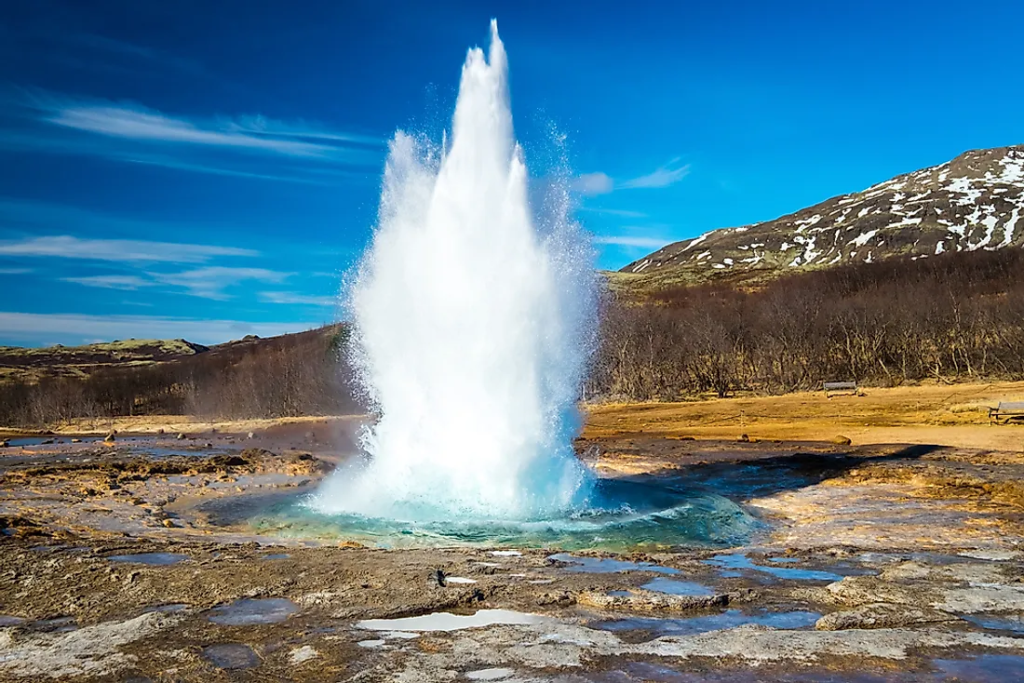
Strokkur Geyser, located in the Haukadalur Valley of Iceland, is one of the country’s most famous and frequently active geysers. Erupting every 6-10 minutes, Strokkur shoots a column of water and steam up to 130 feet (40 meters) into the air, creating a spectacular display that draws visitors from around the world.
The name “Strokkur” comes from the Icelandic word for “churn,” which is fitting given the geyser’s regular eruptions. Strokkur’s consistency is due to its relatively simple underground structure, which allows water to be heated and pressurized at a steady rate. This regularity makes Strokkur one of the most reliable geysers in the world, and a must-see attraction for anyone visiting Iceland.
In addition to Strokkur, the Haukadalur Valley is home to several other geothermal features, including hot springs, mud pots, and fumaroles. Visitors can explore the area via a network of boardwalks and trails, taking in the stunning scenery and experiencing the raw power of Iceland’s geothermal wonders.
Giant Geyser, Yellowstone National Park, USA

Giant Geyser, located in the Upper Geyser Basin of Yellowstone National Park, is one of the world’s tallest and most impressive geysers. When it erupts, Giant can shoot water and steam up to 250 feet (76 meters) into the air, creating a spectacular display that can last for over an hour.
Despite its name, Giant Geyser is not the largest geyser in Yellowstone. However, it is known for the sheer force and volume of its eruptions. When Giant erupts, it can discharge up to 1 million gallons (3.8 million liters) of water, making it one of the most powerful geysers in the park.
Giant Geyser’s eruptions are highly unpredictable, with intervals between eruptions ranging from a few days to several years. This unpredictability adds to the geyser’s allure, as visitors never know when they might be lucky enough to witness one of its incredible displays. When Giant does erupt, it is often accompanied by a series of smaller eruptions from nearby geysers, creating a truly awe-inspiring spectacle.
Excelsior Geyser, Yellowstone National Park, USA
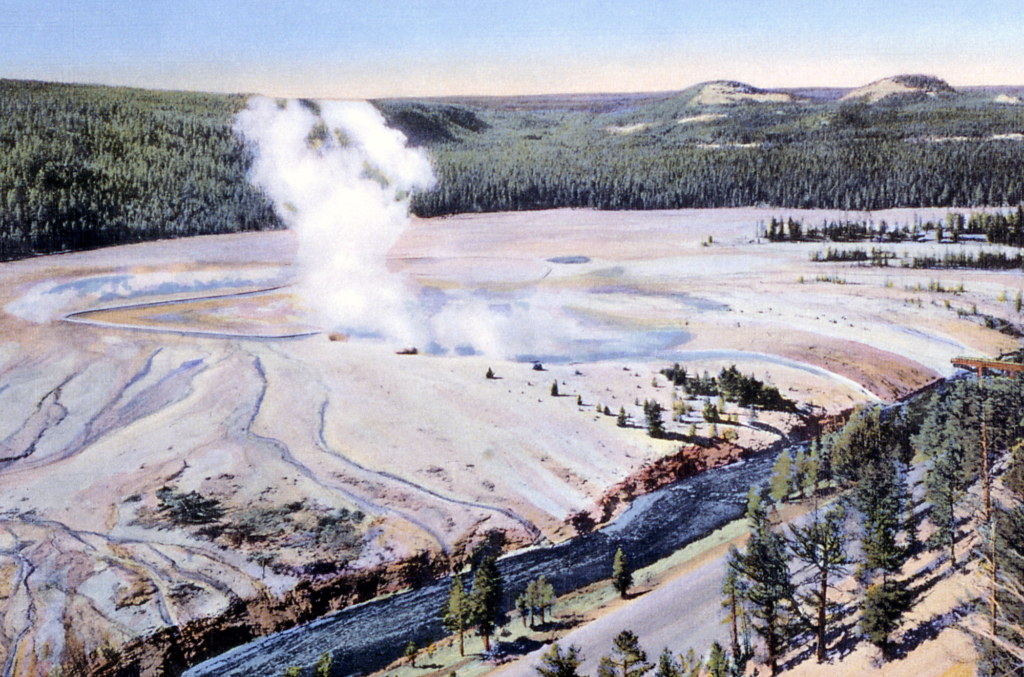
Excelsior Geyser, located in the Midway Geyser Basin of Yellowstone National Park, is a true giant among geysers. While it has not erupted since 1985, Excelsior was once one of the largest and most powerful geysers in the world, with eruptions reaching heights of up to 300 feet (91 meters).
Today, Excelsior Geyser is a massive hot spring, discharging over 4,000 gallons (15,000 liters) of boiling water per minute into the nearby Firehole River. The sheer volume of water and the size of the geyser’s crater make it a stunning sight, even in its dormant state.
Geologists believe that Excelsior’s transition from an active geyser to a hot spring is due to changes in its underground structure. Over time, the geyser’s vent may have widened, allowing water to escape more easily and reducing the pressure needed for an eruption. Despite this change, Excelsior remains a testament to the incredible power and scale of Yellowstone’s geothermal features.
Grand Geyser, Yellowstone National Park, USA

Grand Geyser, located in the Upper Geyser Basin of Yellowstone National Park, is the tallest predictable geyser in the world. Erupting every 7-15 hours, Grand shoots water and steam up to 200 feet (60 meters) into the air, creating a breathtaking display that can last for up to 20 minutes.
What sets Grand Geyser apart from other geysers is its unique eruption pattern. Before a major eruption, Grand undergoes a series of smaller eruptions, known as “bursts.” These bursts can reach heights of 30-60 feet (9-18 meters) and serve as a prelude to the main event. When the major eruption finally occurs, it is a truly awe-inspiring sight, with a powerful jet of water and steam shooting skyward.
Visitors to the Upper Geyser Basin can witness Grand Geyser’s eruptions from a series of boardwalks and viewpoints, which offer stunning views of the geyser and the surrounding landscape. The area is also home to several other notable geysers, including Castle Geyser and Daisy Geyser, making it a must-visit destination for anyone interested in the wonders of Yellowstone’s geothermal features.
Pohutu Geyser, New Zealand

Pohutu Geyser, located in the Whakarewarewa Thermal Valley of New Zealand’s North Island, is the country’s largest active geyser. Erupting up to 20 times per day, Pohutu shoots water and steam up to 100 feet (30 meters) into the air, creating a spectacular display that draws visitors from around the world.
The name “Pohutu” comes from the Maori language and means “big splash” or “explosion,” which is fitting given the geyser’s impressive eruptions. Pohutu’s consistency is due to its relatively stable underground structure, which allows water to be heated and pressurized at a steady rate.
In addition to Pohutu, the Whakarewarewa Thermal Valley is home to several other geothermal features, including hot springs, mud pools, and fumaroles. Visitors can explore the area via a network of walking trails, taking in the stunning scenery and learning about the cultural significance of the geothermal features to the local Maori people.
Beehive Geyser, Yellowstone National Park, USA
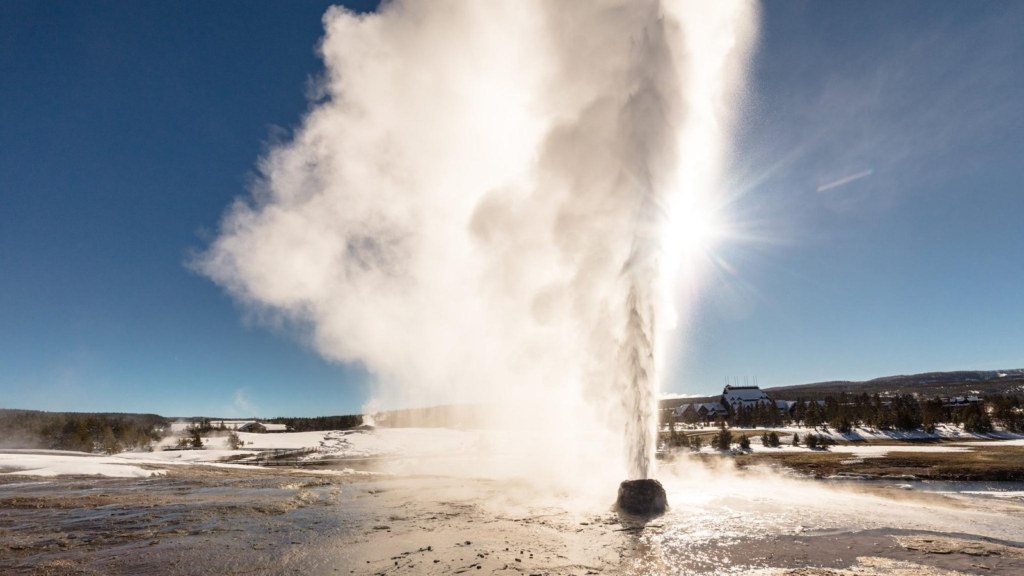
Beehive Geyser, located in the Upper Geyser Basin of Yellowstone National Park, is named for the distinctive cone-shaped formation that surrounds its vent. When Beehive erupts, it shoots a narrow jet of water and steam up to 200 feet (60 meters) into the air, creating a spectacular display that can last for up to 5 minutes.
What sets Beehive Geyser apart from other geysers is the force and intensity of its eruptions. The narrow shape of the geyser’s cone helps to concentrate the water and steam into a powerful jet, which can be seen and heard from a considerable distance. Beehive’s eruptions are also relatively predictable, occurring every 12-18 hours on average.
Visitors to the Upper Geyser Basin can witness Beehive Geyser’s eruptions from a series of boardwalks and viewpoints, which offer stunning views of the geyser and the surrounding landscape. The area is also home to several other notable geysers, including Old Faithful and Castle Geyser, making it a must-visit destination for anyone interested in the wonders of Yellowstone’s geothermal features.
Taupo Volcanic Zone Geysers, New Zealand

The Taupo Volcanic Zone, located in the central North Island of New Zealand, is home to some of the country’s largest and most impressive geysers. This geothermal wonderland covers an area of approximately 9,900 square miles (25,600 square kilometers) and is home to over 100 active geysers, as well as numerous hot springs, mud pools, and fumaroles.
Some of the notable geysers in the Taupo Volcanic Zone include:
- Lady Knox Geyser: Erupting daily at 10:15 am, Lady Knox shoots water and steam up to 65 feet (20 meters) into the air, creating a spectacular display that is triggered by a surfactant added to the geyser’s vent.
- Kereru Geyser: Located in the Orakei Korako geothermal field, Kereru Geyser erupts every 30-40 minutes, shooting water and steam up to 50 feet (15 meters) into the air.
- Wairakei Geyser: One of the largest geysers in the Taupo Volcanic Zone, Wairakei erupts every 5-10 minutes, shooting water and steam up to 100 feet (30 meters) into the air.
Visitors to the Taupo Volcanic Zone can explore the area’s geothermal features via a network of walking trails and guided tours, taking in the stunning scenery and learning about the geological and cultural significance of these incredible natural wonders.
Valley of Geysers, Russia
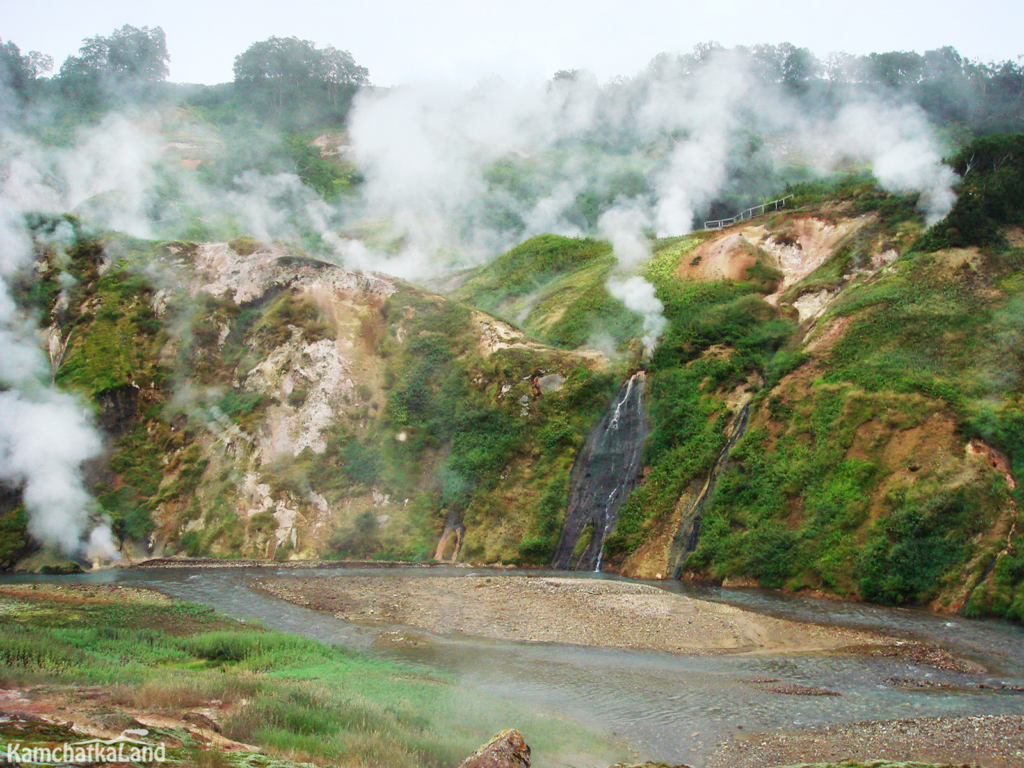
The Valley of Geysers, located on the Kamchatka Peninsula in Russia’s Far East, is the second-largest geyser field in the world. This remote and rugged landscape is home to over 200 geysers, as well as numerous hot springs, mud pools, and fumaroles.
The Valley of Geysers was discovered in 1941 by local scientist Tatyana Ustinova and has since become a protected natural area and a popular destination for adventurous travelers. Some of the notable geysers in the Valley of Geysers include:
- Velikan (Giant) Geyser: The largest geyser in the valley, Velikan erupts every 6-8 hours, shooting water and steam up to 130 feet (40 meters) into the air.
- Zhemchuzhny (Pearl) Geyser: Known for its unique, pearl-like droplets of water, Zhemchuzhny erupts every 10-12 minutes, shooting water and steam up to 30 feet (9 meters) into the air.
- Fontan (Fountain) Geyser: One of the most frequently erupting geysers in the valley, Fontan erupts every 15-20 minutes, shooting water and steam up to 60 feet (18 meters) into the air.
Visiting the Valley of Geysers requires a special permit and is typically done as part of a guided tour. The remote location and challenging terrain make it an adventure destination for those seeking to experience the raw power and beauty of Russia’s geothermal wonders.
Fly Geyser, Nevada, USA

Fly Geyser, located on the edge of the Black Rock Desert in Nevada, is a unique and visually stunning geothermal feature. Unlike most geysers, which are formed by natural geological processes, Fly Geyser was created accidentally in 1964 when a geothermal energy company drilled a test well at the site.
The well was improperly capped, allowing minerals-rich water to spew out and accumulate over time. The resulting formation is a 12-foot (3.7-meter) tall mound covered in vibrant hues of green, red, and yellow, created by thermophilic algae that thrive in the warm, mineral-rich water.
Fly Geyser erupts constantly, shooting water and steam up to 5 feet (1.5 meters) into the air. While it may not be as tall or powerful as some of the other geysers on this list, its unique appearance and origin make it a fascinating and photogenic destination.
Access to Fly Geyser is limited, as it is located on private property. However, guided tours are available, allowing visitors to witness this incredible geothermal oddity and learn about its accidental creation and the delicate ecosystem that has developed around it.
Conclusion
The world’s largest geysers are a testament to the incredible power and beauty of the Earth’s geothermal energy. From the towering eruptions of Steamboat Geyser in Yellowstone to the colorful mound of Fly Geyser in Nevada, these natural wonders offer a glimpse into the dynamic processes that shape our planet.
Visiting these geysers not only provides an opportunity to witness their awe-inspiring displays but also to learn about the unique geological and ecological systems that support them. By understanding and appreciating these natural wonders, we can work to protect and preserve them for future generations to enjoy.
Whether you are a geology enthusiast, an adventure seeker, or simply someone who appreciates the raw beauty of the natural world, exploring the top 12 largest geysers in the world is an unforgettable experience. These incredible geothermal features remind us of the power and mysteries that lie beneath the Earth’s surface, waiting to be discovered and marveled at by those who seek them out.

